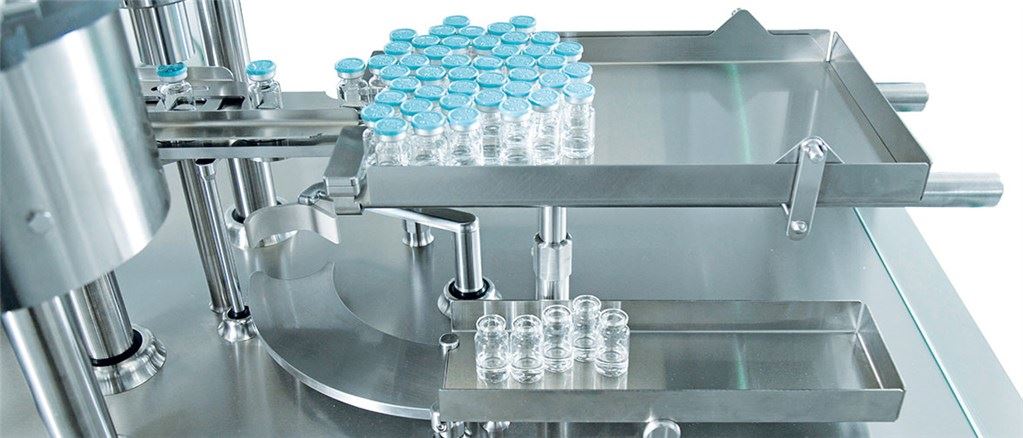With the ongoing Covid-19 pandemic and the increasing demand for low-cost vaccines and other pandemic-related treatments at an all-time high, big pharmaceutical companies are stepping up efforts to make continuous manufacturing a reality.
Today, the pharmaceutical industry is facing unprecedented challenges. With life expectancies across the developed world on the rise, aging populations mean more patients living with chronic, complex conditions, such as Type II diabetes. The expense of treating these patients is putting pressure on healthcare systems which, in turn, expect pharmaceutical companies to supply medications at lower costs. But high levels of market competition coupled with more stringent criteria for drug approval and healthcare insurance payouts mean pharmaceutical profits are increasingly under pressure.
Matters have come to a head with the ongoing Covid-19 pandemic, which has reinforced the need for rapid, efficient and scalable drug development and production. At this critical moment for global health, with demand for low-cost vaccines and other pandemic-related treatments at an all-time high, the world is watching as big pharma invests growing resources in manufacturing innovation.
Opportunities and Challenges
Continuous manufacturing—where products are produced nonstop in a single, uninterrupted process—is increasingly touted as the next step in the pharmaceutical industry. Unlike the stop-and-start batch process that the pharmaceutical industry has employed for decades, it is far quicker and easier to scale: it can take up to 300 days to produce a drug using batch processing.

Continuous manufacturing offers greater control and eliminates the need to stop and handle drugs between steps, offering potential improvements in quality and consistency. On top of this, the equipment involved requires less space, has a lower environmental impact, and, in some cases, can be moved between facilities.
Ronald Piervincenzi, CEO of the nonprofit organization U.S. Pharmacopeia, explained:
“Continuous manufacturing is especially well-suited to crises such as the current Covid-19 pandemic. Advantages over batch manufacturing include the availability and use of real-time data to accelerate manufacturing scale-up and help improve medicine quality, which enables more efficient and nimble production of essential medicines and strengthens the overall supply chain.”

Continuous manufacturing processes are now starting to emerge for small molecule drugs. To date, the US Food and Drug Administration has approved six. However, the continuous manufacturing of large molecule drugs—such as monoclonal antibodies—and biologics—such as vaccines, cell-based therapies and gene therapies—is far more complex.
Longer processing runs before equipment changes (up to 90 days) mean challenges in maintaining equipment sterility, checking product quality, and ensuring systems can withstand dynamic wear. Manufacturers need to consider what to do when there is a problem during manufacturing so they can segregate potentially non-conforming materials from the rest of the process. Real-time testing also needs further development.
Furthermore, an absence of regulatory guidance from major bodies means multiple smaller industry bodies each provide best practice recommendations and standards, which can often make compliance a headache.
Evolving Tech
Innovation in flexible technology has the potential to catalyze the widespread adoption of continuous manufacturing, with flexible systems allowing biomanufacturers to maintain equipment sterility during long processing runs. Flexible systems arrive pre-sterilized and can be disposed of between batches, saving time on sterilization and validation and providing cross-contamination control.
Flexible technologies for continuous processing systems must perform overextended production cycles, and manufacturers have risen to this challenge. Watson-Marlow Fluid Technology Group (WMFTG), for example, uses highly durable parts that withstand high levels of dynamic wear, such as PureWeld® XL peristaltic pump tubing. This was tested against competing products and shown to maintain higher flow rates at stronger discharge pressures over longer time scales.





To avoid contamination and the risk of operator error, continuous manufacturers are increasingly turning to automated systems. For example, WMFTG’s Flexicon FPC60 Fill/Finish machine is designed to decrease human intervention, increase automation and maintain flexibility. Artificial intelligence (AI) solutions can also be used as part of process control and as tools for monitoring variables such as equipment temperature and pressure levels, checking cleaning procedures against factory specifications and identifying possible contamination sources based on embedded sensor readings.
Jim Sanford, Strategic Sector Manager, Life Sciences at WMFTG, said:
“The momentum of breakthrough technologies is accelerating all the time. AI and automation are already offering the potential for significant improvements across the pharmaceutical industry. By combining these with continuous elements and other new technologies, we will undoubtedly be able to deliver even greater bioprocessing efficiencies.”
Future Focus
The rise of continuous manufacturing will be an evolution, not a revolution. Continuous technologies have already been successfully adopted by some pharmaceutical companies, but industry practitioners estimate it will be another five to ten years before fully integrated continuous biomanufacturing is routinely used on a commercial scale.
Bernhardt Trout, a professor of chemical engineering at the Massachusetts Institute of Technology (MIT) and director of the Novartis-MIT Center for Continuous Manufacturing, said:
“People in the pharmaceutical industry understand the tremendous benefits that would come with industry-wide continuous manufacturing. Now we just need to overcome various hurdles to make it a reality.”











